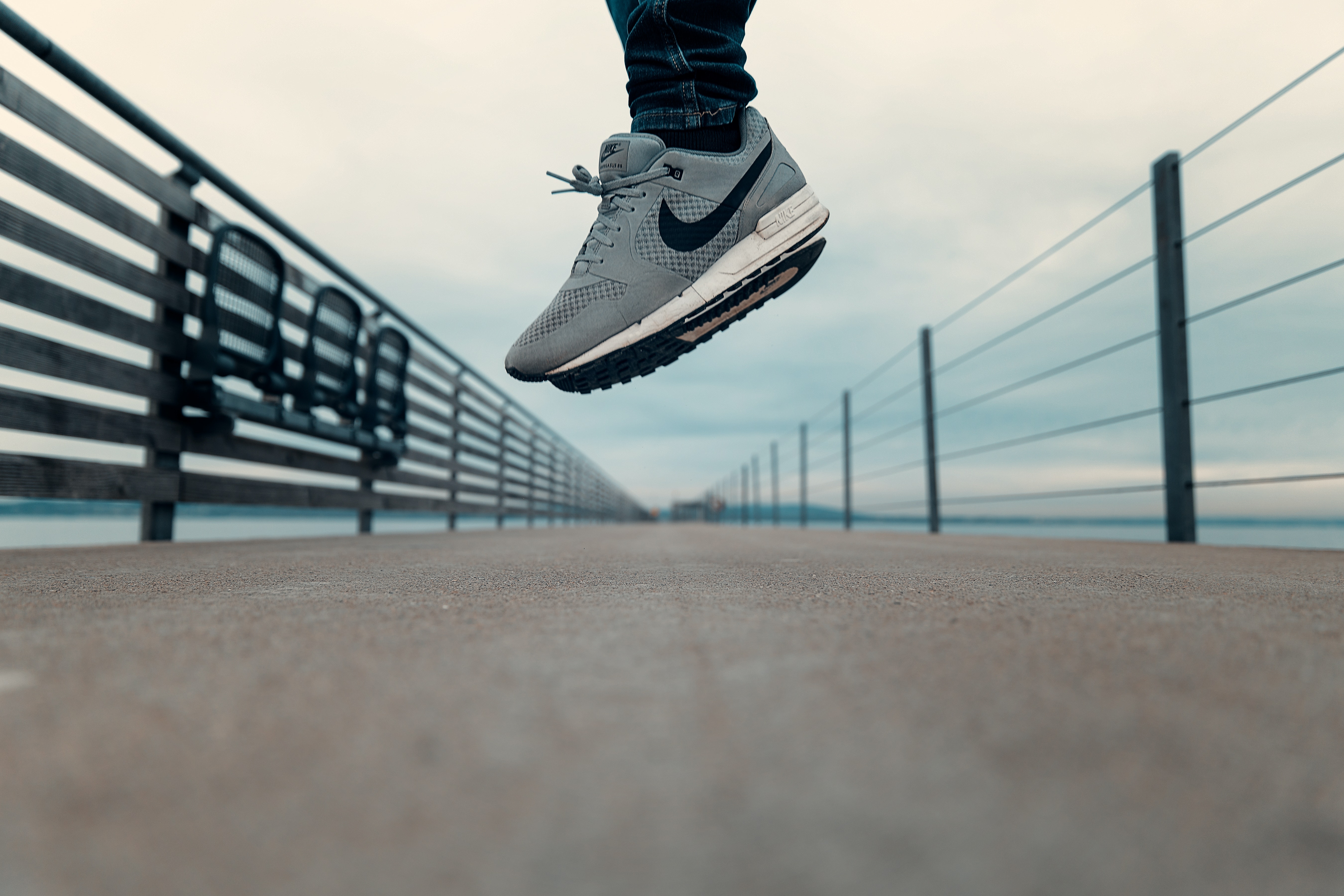At one point in the movie Back to the Future Part II, the character of Marty McFly puts on Nike sneakers – but these weren’t just any old pair of shoes.
Sneakerheads latched on to this idea of self-tying shoes, dubbed “power lace” technology by the film and “auto lace” in real life, and a bit of movie magic became a self-fulfilling prophecy of the future. In 2016 as well as in 2011, Nike released limited special-edition runs of Air MAGs, replicas of those from Back to the Future. These shoes were meant mostly for display purposes, and only the 2016 Mags had actual self-tightening laces.
Later in 2016, Nike finally made its auto-lacing HyperAdapt 1.0 sneaker available for purchase. The HyperAdapt 1.0 was the result of years of testing and collaboration between Nike engineers and designers. Tiffany Beers, former Senior Innovator at Nike, was the technical lead on the HyperAdapt 1.0 project. She is credited as an inventor on 301 total patents in the ktMINE database (the majority of which are related to shoes).
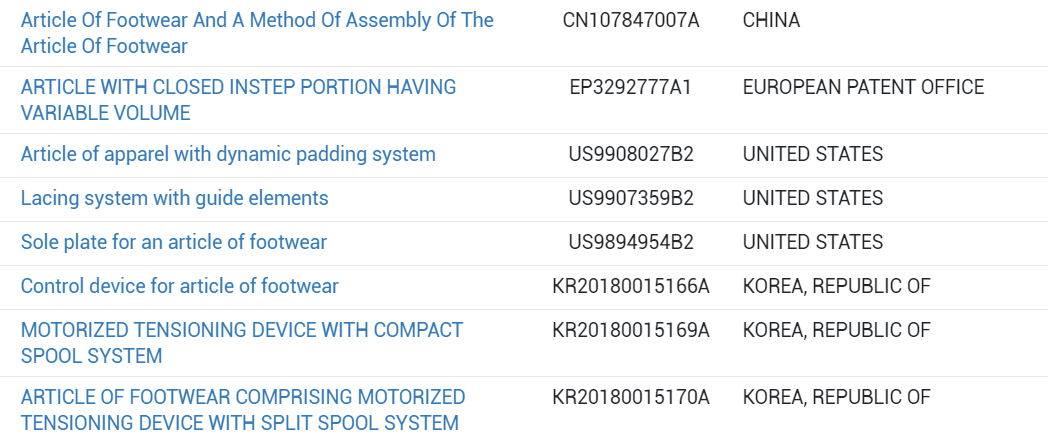
Partial screenshot of the list of all patents held by Tiffany Beers
A search of the ktMINE database for patents containing the keywords “footwear” and “automatic lacing” shows that Beers takes the top place among inventors of related patents, holding at least 36 patents related to auto-lace shoe technology.
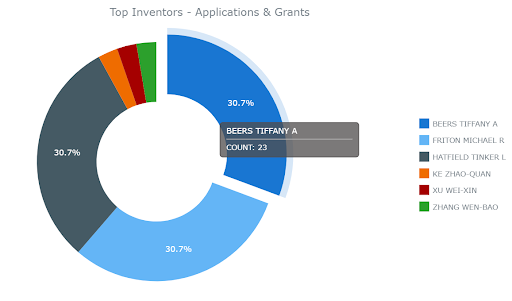
Search terms: all text, “footwear” and “automatic lacing”
Beers’ earliest auto-lace shoe technology patent was published in 2009. The proposed design used a motor inset within a cavity in the shoe’s sole attached to a “strap moving mechanism.”
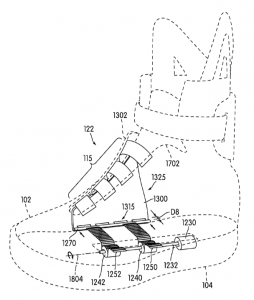
Source: ktMINE patent search
As Tiffany Beers recalled in a 2016 interview with WIRED, there were some issues with this first design iteration.
For one thing, the sneakers were huge and rigid and basically unwearable; they looked as though someone had watched Back to the Future Part II and drawn the Nike Mags from memory as a cartoon. For another, you had to plug the things into a socket with an AC adapter—permanently. They could not hold a charge. Also, owing to the size and mass of the motor, similar in both measures to a roll of quarters, the shoe was heavy and loud. “It sounded like you were in a dentist’s office,” Beers says. “And it closed … very slowly. And it opened … very slowly. But we proved we could do it.” (Her efforts resulted in US Patent 8,046,937, in which “an article of footwear with an automatic lacing system is disclosed.”)
The WIRED piece linked above and this feature on Beers from the New York Times provide additional context on the creativity and discipline required to bring the HyperAdapt to fruition.
The successor to the HyperAdapt, the Adapt BB, was released at the beginning of this year.
According to a Nike press release, the Nike Adapt platform creates a “truly custom fit” through the combination of “an advanced power-lacing system, an app, and continually updated firmware” in the Adapt BB shoe.
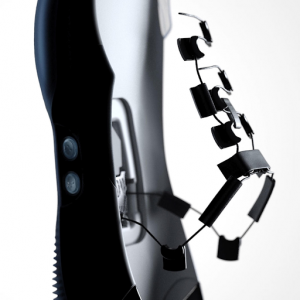
The (auto) lace engine of the Nike Adapt BB. Left: From Nike press release.
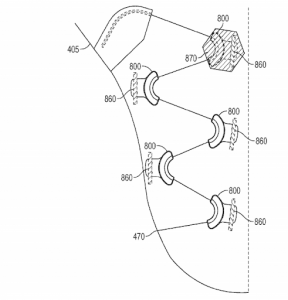
The (auto) lace engine of the Nike Adapt BB. From Espacenet full-text document, US2018110298A1.
Nike has said that the shoe’s web and application connectivity will allow for additional updates as time goes on. Patent EP 2,584,926 (B1), granted just last month on April 24, illuminates this potential.
The patent, Method of changing color of an article of footwear with color change portion, describes several processes for controlling the color change of a shoe. One schematic, shown below, details how a “heel strike count” value – corresponding to distance traveled by the wearer – could control color change.
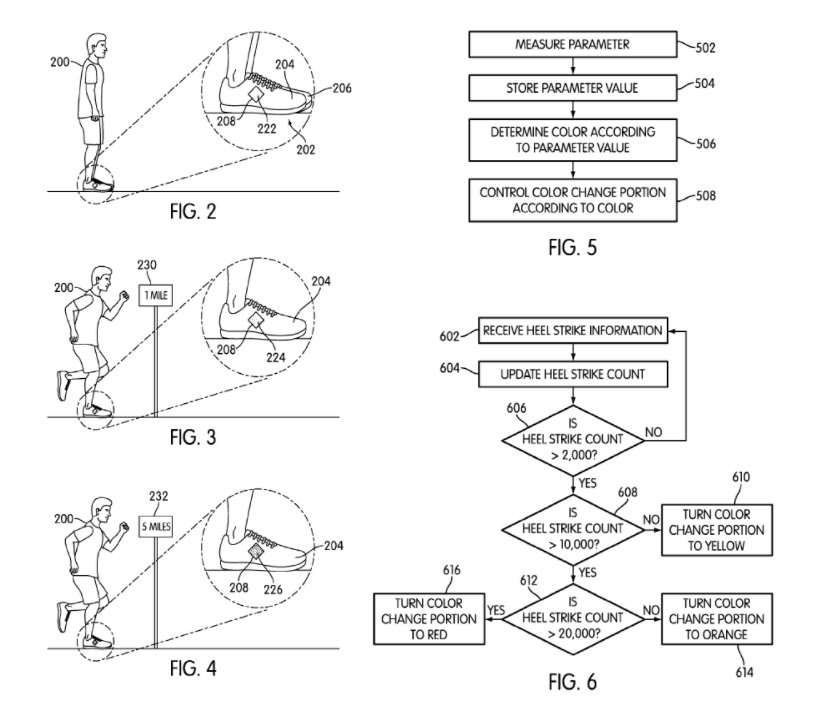
Figures 2-4 are “a schematic view of an embodiment of a user wearing an article of footwear with a color change portion;” Figures 5 and 6 are “an embodiment of a process for controlling a color change portion.” Source: ktMINE Patent Search
Another proposed use of this technology detailed in the patent is detecting the color of an article of clothing using a mobile device, and changing the color of the shoes accordingly.
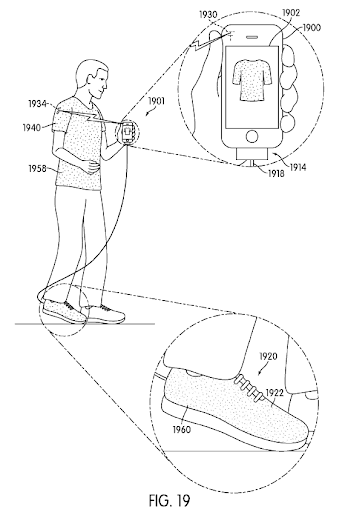
Figure 19 is “a schematic view of an embodiment of a method of detecting an article of clothing for use with a color change system using a mobile device.” Source: ktMINE Patent Search; Espacenet full-text document
It will be interesting to see what additional updates to this technology Nike will choose to develop and push to users, and if that will include or go beyond the visual modifications noted in the patent diagrams above. For example, Tinker Hatfield (a well-known designer of many popular Nike shoes) has stated that auto-lace and similar technology could benefit people with physical limitations that make tying shoes difficult. While the Adapt BB is still being touted as a basketball shoe, both athletes and non-athletes alike could benefit from this technology.
Will auto-lacing footwear become a mainstream adoption in the near future? Time traveling is just too dangerous–we’ll have to wait and see.
